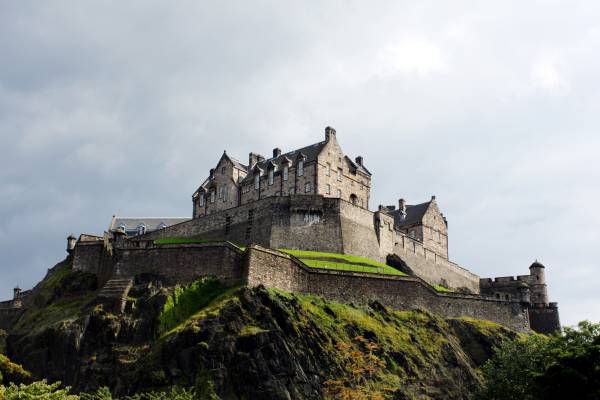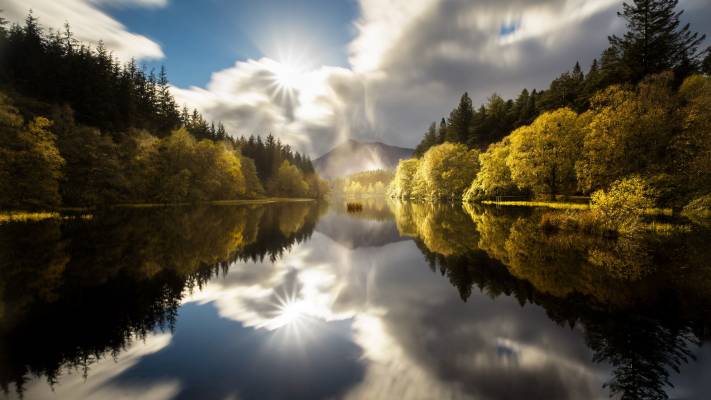
Edinburgh’s real life ‘Red Wedding’

One of Game of Thrones’ bloodiest scenes may have been inspired by two shocking events from Scotland’s unbelievable history
George R.R. Martin is the author of A Song of Ice and Fire — the monumental book series which went on to inspire the most talked about drama on television: Game of Thrones.
One of the reasons fans love the show is its unpredictability, as you never know who is good and who is bad; who is going to die and who will survive from series to series. By the end of each episode literally anybody could be betrayed or murdered. Perhaps the most famous example of this is the scene which has come to be known in pop culture as ‘The Red Wedding’. In short, the incident involves several of the Stark family – arguably the only characters with a moral code to their name at the time — visiting a rival House for a wedding.
SPOILER ALERT
Despite being guests in a foreign territory they are all brutally murdered. The scene is shocking to witness, but what’s more shocking is that it’s not unlike some unsavoury real events that have taken place in Scottish history. In fact, Martin famously said:
“No matter how much I make up, there’s stuff in history that’s just as bad, or worse.”
And he is absolutely right. We’re going to take a closer look at two of the events from Scottish history that inspired Martin’s Red Wedding – one of which took place within the walls of Edinburgh Castle itself.
The Black Dinner
Sometimes it’s truly terrifying when art imitates life, and The Black Dinner is clearly an influence in Martin’s brutal betrayal, right down to the names the instances have garnered. The Black Dinner took place in the November of 1440, inside Edinburgh Castle itself.
Back in 1440, Scotland was made up of prominent clans, some more powerful than others. Among these were the Red Douglas and the Black Douglas clans.
Sir William Crichton was the Chancellor of Scotland at the time, serving under the rule of the ten year old King James II of Scotland. Crichton held reserved fears that the Black Douglas clan were growing too powerful too quickly, and decided to take matters into his own hands.
That November, the newly appointed 6th Earl of Douglas and his little brother were invited by the young King to dine with him at Edinburgh Castle. At the time, the new Earl was only 16 years old.
But it wasn’t King James II who had sent the invitation — it was Crichton.
The story goes that the Earl and his brother arrived at the castle, where they were met by the King and invited inside for dinner. The three young children all enjoyed each other’s company immensely as they soaked up the food, conversation and entertainment. That is, until the end of the meal.
The final plate to be brought to the table sported the severed head of a black bull — a clear symbol of the end of the Black Douglas clan. In their shock and horror, the two Douglas children were dragged outside, where they faced a mock trial and were found guilty of high treason. They were then beheaded, despite the King’s pleas to save them.
The tale also goes that the Earl pleaded for his younger brother to be killed first, so that the youngest Douglas wouldn’t have to witness his older brother’s beheading.
The shock of this grizzly incident was perfectly encapsulated in the lines of another famous Scot, Sir Walter Scott. He wrote:
“Edinburgh Castle, toune and towre,
God grant thou sink for sin!
And that e’en for the black dinner
Earl Douglas gat therein.”
Edinburgh has one of the richest, most fascinating histories of any city in the UK or, indeed, the world. So it’s no surprise that one of the world’s most successful writers has used the city’s dark past to fuel his own captivating fantastical stories. But which other famous Scottish incident helped Martin dream up the infamous Red Wedding?
The Massacre of Glencoe
A royal turnover back in 1691 meant that all the clans of Scotland were called upon to renounce their allegiance to the deposed King James VII, and instead swear their loyalty and servitude to King William of Orange.
The chief of each clan was given until New Year’s Day, 1st January 1692, to show their new allegiance. They were expected to deliver a signed document swearing an oath to King William. For one clan, Clan McDonald, this was no easy task.
The Highland Clan McDonald had already sworn an oath to King James VII of Scotland, which meant that they had to wait for him to send word that they were free to break the oath before they could swear allegiance to a new ruler. This tricky situation wasn’t helped by the fact that John Dalrymple, the Secretary of State, was a Lowlander who loathed Clan McDonald.
To say that the clan cut things fine would be an understatement. It was 28th December by the time a messenger arrived with the vital letter from King James VII giving the clan permission to vocalise their new allegiance. This gave the chief of the McDonald Clan, Maclain, just three days to get the signed oath to Dalrymple.
To make matters worse, Maclain was detained on his journey south as he went through Inveraray, the town of the rival Clan Campbell. Despite this, he did manage to deliver the signed oath of allegiance, but unfortunately by that time it was several days late.
Dalrymple and his legal team weren’t interested in late documents. They rejected the MacDonald’s oath and put plans in place to cut the clan down “root and branch.”
And that’s exactly what they did. In early 1692, 120 men under the command of Captain Robert Campbell made their way to the MacDonalds in Glencoe, asking for shelter because the nearby forts were full. The MacDonalds greeted them with hospitality, and the soldiers stayed for almost two weeks. Then a man named Captain Drummond arrived, instructing the soldiers to “pull all to a sword under seventy.”
The soldiers spent an amicable evening playing cards with their hosts, then waited until the MacDonalds were asleep and brutally murdered as many men as they could see. 38 men died as a result, many still in their beds. More than forty women and children escaped the massacre only to die of exposure in the blizzard raging outside.
To this day, you can see a sign above the door of the Clachaig Inn in Glencoe which denies entry to Campbells.
One of the most shocking aspects of the Glencoe massacre was that it took place under the ‘Slaughter Under Trust’ rule — which to Game of Thrones fans will sound eerily similar to the breaking bread oath of safety that was broken during the Red Wedding.
These two instances show how the power of Scotland’s incredible history has influenced some of the world’s biggest stories. And as the capital of Scotland, there’s always something new to discover in Edinburgh’s stunning, winding streets.
Edinburgh certainly has a rich history, and an even richer future. Find your dream property in the Scottish capital at Quartermile. Arrange a viewing today by calling 0845 000 25 25 or emailing This email address is being protected from spambots. You need JavaScript enabled to view it. .



